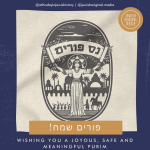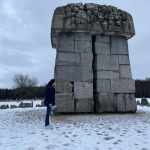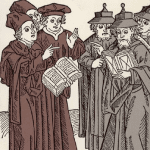10.26.18
Originally published: https://si-siris.blogspot.com/2018/10/voting-rights-and-archives-center.html
.
The fraught history of Southern states denying African Americans the right to vote, a right guaranteed by the 15th Amendment, was a practice that extended through the first half of the 20th century. Southern states, through the passage of Jim Crow laws, legalized various forms of voter discrimination. A poll tax, a literacy test, and, ironically, moral character tests served as examples. The Civil Rights Acts of 1957 and 1960 were the first laws that promoted the rights of African-Americans since the end of Reconstruction. While the former expanded the Justice Department by creating the Civil Rights Division and the Commission on Civil Rights, the latter protected African Americans from voter disenfranchisement in local municipalities and included a congressional provision that authorized the federal courts to appoint “referees” in areas where discrimination took place. However, voter turnout showed little to no variance during this time and demonstrated the power of local election officials to discriminate against minority voters.
The work that went into the fight against the forces of voter suppression is well documented in several Archives Center collections. The Afro Americana series of the Warshaw Collection of Business Americana includes extensive materials from the years 1961-1964. The work behind Freedom Summer, otherwise known as the Mississippi Summer Project (MSP), began in late spring of ‘64. The objectives of MSP involved galvanizing local support by lobbying the state government to ensure full voting rights for African Americans. The project put forth plans spearheaded by the Council of Federated Organizations and the Student Non-Violent Coordinating Committee (SNCC.) Such materials include “The Battle for Civil Rights Negro Representation Now,” a magazine distributed by the American Labor Party headquarters, along with copies of the “Student Voice,” which showcased the moment college students from elite universities bused themselves to Mississippi to staff educational programs at places that became known as Freedom Schools.
This is not the only collection that illuminates the struggles of African-Americans in the 20th Century. The portfolio Photographs of Stephen Somerstein / 1965 Selma to Montgomery March documented the civil rights march from Selma to Montgomery, Alabama in the spring of 1965. The collection includes photographs that document everyone from Martin Luther King to John Lewis, the head of SNCC. Some photographs show the eclectic mix of marchers walking side by side while other snapshots depict families sitting on their porch watching the passersby. The collection features a rare photograph of Martin Luther King addressing twenty-five thousand marchers before the Alabama State Capitol building in Montgomery.
Stephen Somerstein, photographer. “Dr. Martin Luther King, Jr., speaking behind a sea of microphones… March 25, 2965.” Silver gelatin print.” Gift of the artist.
NMAH Archives Center, AC1300-0000001.
Lastly, the work of photographer Bob Adelman, as it appears in the Bob Adelman Civil Rights Photographs, are works that span the entirety of the civil rights movement. Some of his most powerful pictures include a boy in school while a portrait of Lincoln hangs above. While the symbolism might speak for itself, it shows how Lincoln’s legacy looms large, casting a shadow over ongoing battles. Another shows a black man leaving a “Whites Only” restroom, suggesting that, for some, the best way to protest segregation is through personal integration, illuminating the strides made by individuals to combat state-sanctioned discrimination. Perhaps the most striking photograph of the group depicts a black man filling out a ballot card in the spring of 1966, just a year after Congress passed the Voting Rights Act. In it, his hand is vividly exposed as he draws an ‘x’ next to each of his chosen candidates.
Bob Adelman, photographer. Silver gelatin print, untitled, 1960s.
Gift of Jae Brown. NMAH Archives Center, AC1438-0000015-2.
Bob Adelman, photographer. Silver gelatin print, untitled, 1960s.
Gift of Jae Brown. NMAH Archives Center, AC1438-0000013.
All three of these collections teach us how the African-American right to vote was contested, not a given. The way this right was earned and how the struggles are remembered now have renewed relevance. Recent threats to the voting rights act challenge us to reacquaint ourselves with the past in order to better confront the present.













Start the discussion at community.jewishoriginal.com